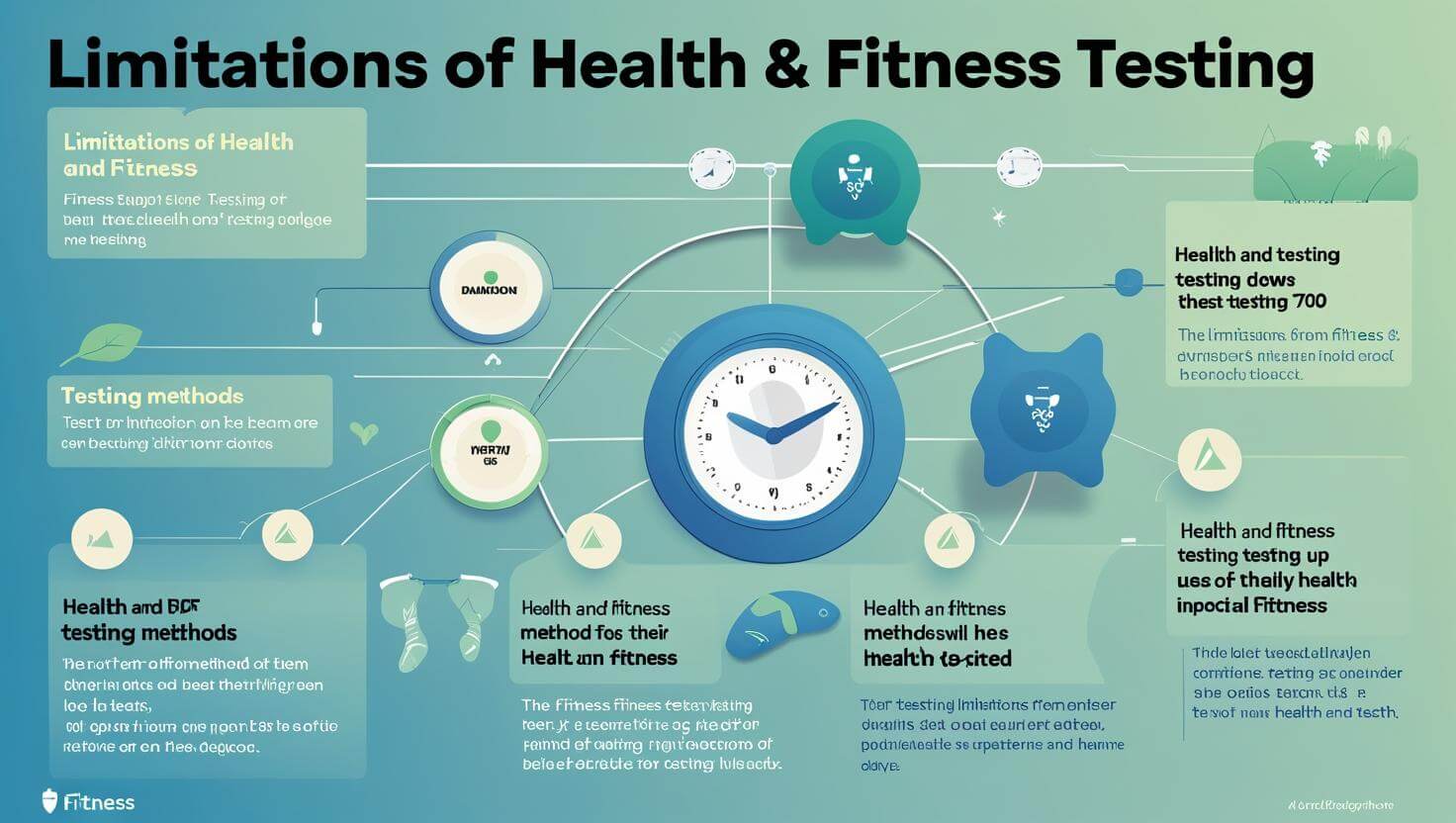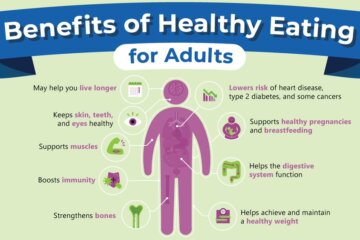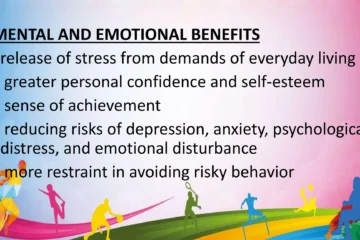“What are the Limitations of Health And Fitness Testing”
Have you ever wondered if health and fitness tests truly give you the complete picture of your well-being? You might be relying on these assessments to map out your fitness journey, but have you considered their limitations?
Understanding these limitations can help you make more informed decisions about your health. By the end of this article, you’ll discover why some results might not be as definitive as they seem and how you can navigate these challenges to achieve your fitness goals.
Dive deeper to uncover what these tests may not reveal and how this knowledge can empower your health strategy.
Purpose Of Health And Fitness Testing
Understanding the purpose of health and fitness testing is essential. These tests provide valuable insights into an individual’s physical condition. They help identify strengths and weaknesses in one’s health and fitness levels. The primary aim is to assess various aspects such as endurance, flexibility, and strength. This information aids in creating personalized fitness plans. It is crucial for setting realistic goals and tracking progress. Health professionals often use these tests to monitor improvements over time.
Assessing Physical Fitness Levels
Fitness tests evaluate current physical capabilities. They measure how well the body performs specific tasks. This includes activities like running, lifting, or stretching. These tests offer a snapshot of overall fitness health. They highlight areas that need improvement. Knowing one’s fitness level helps in making informed decisions. It guides individuals on what exercises to focus on. This assessment is fundamental for tailoring fitness programs.
Identifying Health Risks
Health and fitness tests can reveal potential health issues. They detect signs of cardiovascular problems or muscular imbalances. Early identification of these risks is crucial. It allows for preventive measures to be taken. By understanding potential health threats, individuals can seek medical advice. This proactive approach reduces the likelihood of serious health problems. It emphasizes the importance of regular health evaluations.
Setting Realistic Fitness Goals
Testing helps in setting achievable fitness targets. Knowing your starting point is vital. It ensures goals are realistic and attainable. These tests provide a baseline for improvement. With clear data, individuals can plan their fitness journey effectively. It motivates them by showing progress over time. Achieving these goals boosts confidence and encourages continued effort. Realistic goals lead to sustainable fitness habits.
Tracking Progress
Regular testing helps monitor progress. It shows how far someone has come in their fitness journey. Comparing past and present results provides motivation. It highlights improvements and areas needing more focus. This tracking is essential for maintaining motivation. Seeing progress encourages individuals to continue their efforts. It ensures fitness plans remain effective and relevant.

Credit: www.thehealthygamer.com
Common Testing Methods
Health and fitness testing is like having a flashlight in the dark. It helps you see where you stand and where you need to go. But, sometimes that flashlight can flicker. Not all testing methods shine equally. Some are more reliable than others. Let’s dive into common testing methods and see where they might fall short.
Laboratory Tests
Laboratory tests offer precision. They are usually conducted in controlled environments. Think of VO2 max tests for cardiovascular endurance or blood tests for nutrient levels. These tests can be expensive. Also, they often require specialized equipment. You might not have immediate access to them. Do you feel like your health data is trapped behind a lab door?
Field Tests
Field tests are practical. They can be conducted in everyday settings. Consider a 12-minute run test or a shuttle run. These tests are more accessible. However, they might lack accuracy. Weather conditions and surface type can affect results. Have you ever tried running on a windy day? Field tests might not give you the full picture.
Self-assessment Tools
Self-assessment tools give you control. They’re usually apps or online questionnaires. They can track your progress over time. However, they rely heavily on your input. Human error can creep in. Ever felt unsure about how honest you should be? These tools can be subjective. They might not reflect your true fitness level.
So, as you think about your fitness journey, consider the limitations of these methods. Are they giving you the clarity you need? Or are they leaving you with more questions than answers?
Accuracy Concerns
Health and fitness testing provides valuable insights into your physical condition. However, the accuracy of these tests often sparks debate. Understanding their limitations helps in interpreting results wisely. Accuracy concerns arise due to various factors affecting test outcomes. Being aware of these can guide better health decisions.
Variability In Results
Results from fitness tests can vary greatly. Different testing methods may produce contrasting outcomes. Even repeated tests can show different numbers for the same person. This variability often confuses individuals seeking reliable data.
Influence Of External Factors
External conditions impact test accuracy significantly. Temperature, humidity, and time of day can alter results. For example, dehydration might skew readings of body composition. Stress levels can affect heart rate measurements. These factors make results less predictable.
Human Error In Testing
Human error plays a role in test inaccuracies. Misreading equipment or incorrect setup can lead to flawed data. Inexperienced testers might not follow protocols precisely. Such errors reduce the trustworthiness of fitness assessments.
Limitations In Scope
Health and fitness testing provides valuable insights. But it does come with limitations. One major limitation is its scope. These tests often focus on specific aspects, missing the bigger picture. Understanding these limitations helps in setting realistic expectations.
Physical Fitness Vs. Overall Health
Physical fitness tests often focus on strength, endurance, and flexibility. They evaluate how well the body performs physically. But they might not assess overall health. Health includes factors like mental well-being and chronic conditions. A person might be physically fit yet not entirely healthy. For instance, stress levels and mental health issues might be overlooked.
Short-term Measurements
Most fitness tests measure short-term performance. They assess current fitness levels or recent improvements. These tests might not reflect long-term health trends. A person might show excellent short-term results. But long-term health could tell a different story. For example, temporary fitness gains might not sustain over time. Consistent long-term habits are key to lasting health.
Accessibility Issues
Accessibility issues often hinder effective health and fitness testing. Many individuals face challenges in obtaining necessary assessments. These obstacles can impact their ability to monitor their health and progress. Let’s explore some common accessibility concerns.
Cost Barriers
High costs can deter many from pursuing fitness tests. Professional assessments often require financial investment. Those with limited budgets may struggle to afford them. This can restrict access to vital health data.
Geographical Limitations
Location plays a crucial role in accessing fitness testing. People in remote areas face challenges. They might need to travel long distances for tests. This inconvenience can limit their health monitoring options.
Availability Of Equipment
Not everyone has access to specialized equipment. Many tests need specific tools for accurate results. Limited availability can prevent proper assessments. This can affect the quality of health tracking.
Ethical Considerations
Health and fitness testing has benefits. It helps individuals understand their health better. Yet, these tests come with ethical concerns. Ethical considerations ensure respect for personal rights. They also protect individuals from harm. These considerations are vital for fair and just testing.
Privacy Concerns
Privacy is a major concern in health testing. Test results often include sensitive information. Unauthorized access can lead to misuse. This can harm individuals in many ways. People may worry about their data being shared. Trust is crucial for accurate testing. Without it, people might avoid tests.
Bias In Testing
Bias in testing can affect results. Some tests may not suit everyone. They may favor certain groups over others. This leads to unfair outcomes. Bias can stem from test design. It can also come from data interpretation. Addressing bias is essential for fair testing.
Impact Of Psychological Factors
The impact of psychological factors on health and fitness testing is often overlooked. These elements can significantly affect the outcomes and interpretations of various assessments. Understanding how your mental state influences your performance can lead to more accurate results and tailored fitness programs.
Test Anxiety
Have you ever felt nervous before a fitness test? You’re not alone. Test anxiety can severely impact your performance. When you’re anxious, your body releases stress hormones that can affect your heart rate and energy levels. This might lead to lower scores than your actual capability.
Imagine you’re about to take a physical fitness test. Your heart races, your palms sweat, and your mind is filled with doubts. These feelings can cloud your judgment and inhibit your physical performance. It’s crucial to manage anxiety through deep breathing and positive affirmations before a test.
Motivational Influences
Think about what drives you during a fitness test. Is it the desire to improve your health, or perhaps to beat a personal record? Motivation plays a key role in how well you perform. Without the right motivation, you might not push yourself to your limits.
Consider setting specific, achievable goals before your test. Having clear objectives can boost your motivation and help you focus. Whether it’s running faster or lifting heavier, knowing what you want to achieve can propel you forward.
Ask yourself: What motivates you to perform at your best during a fitness test? Understanding your personal influences can enhance your focus and results.
By recognizing the impact of psychological factors, you can tailor your approach to fitness testing. You have the power to control your mindset and improve your outcomes. How will you harness your mental strength for better fitness results?
Interpreting Results
Interpreting results from health and fitness tests can be challenging. Many struggle to understand what their scores truly mean. The numbers on reports can confuse or mislead. For a full picture, consider various factors. Personal goals and body conditions play a part. Knowing the limitations helps in making informed decisions.
Misunderstanding Data
Data can often be misinterpreted by individuals. Scores might seem to indicate one thing. In reality, they show something else. For example, a high score may not mean peak health. It could mean something different for each person. Misinterpretation can lead to frustration and wrong actions. Seek expert advice for accurate understanding.
Overemphasis On Numbers
Numbers dominate fitness testing reports. People may focus too much on them. This can lead to missing important details. Health is not just about numbers. Mental well-being and lifestyle matter too. Neglecting these aspects can hamper progress. Balance numbers with other health factors for better outcomes.
Alternatives To Traditional Testing
Traditional health and fitness tests often miss individual variations and real-life scenarios. They can overlook mental health factors and unique personal goals. Personalized approaches may offer better insights into individual progress.
In the world of health and fitness, traditional testing methods like BMI calculations and standardized fitness assessments have been the norm. However, these methods often overlook individual differences and unique health factors. If you’ve ever felt that these tests don’t truly reflect your personal health journey, you’re not alone. Many are turning to alternative methods that offer a more personalized approach to understanding fitness and wellness.
Holistic Approaches
Holistic approaches consider the whole person rather than just focusing on numbers and statistics. This means looking at mental, emotional, and social factors that influence your health. For example, some people find that yoga and meditation provide a comprehensive understanding of their body and mind. Imagine setting aside 10 minutes a day for meditation. You might notice a reduction in stress levels, which could lead to improved physical health over time. Holistic approaches encourage you to listen to your body and make adjustments based on what feels right for you. Have you ever thought about how your emotional health impacts your physical fitness? By focusing on mental well-being, you might find new ways to enhance your overall health journey.
Technological Innovations
Technology offers exciting alternatives to traditional health assessments. With wearables like smartwatches and fitness trackers, you can monitor your progress in real-time. These devices provide insights into your heart rate, activity levels, and even sleep patterns. Have you tried tracking your daily steps? Even a small increase in your step count can lead to significant health benefits over time. Technology allows you to set and achieve personalized goals, making fitness more accessible and enjoyable. Consider using an app to track your nutrition. Seeing your eating habits laid out visually can help you make healthier choices and understand how your diet affects your energy levels. By embracing these innovative tools, you’re empowered to take control of your health in a way that suits your lifestyle. Are you ready to explore how technology can support your fitness goals? Both holistic approaches and technological innovations provide you with new ways to understand and improve your health. By stepping away from traditional tests, you can find methods that align more closely with your personal needs and preferences. How will you choose to redefine your health journey?
Future Directions
As the health and fitness industry evolves, testing methods face challenges. These challenges stem from technological limitations and individual differences. Future directions focus on improving the accuracy and personalization of these tests. Addressing these issues can lead to better health outcomes and tailored fitness plans.
Improving Testing Methods
Current testing methods often lack accuracy. Many tests rely on generalized data, which may not apply to everyone. To improve, we need innovative technologies. These technologies can provide more precise measurements. For example, advanced sensors can monitor various health metrics. This ensures more reliable results for individuals.
Additionally, standardizing procedures can help. Consistent methods lead to accurate and comparable results. This allows for better tracking of progress over time. Enhanced training for professionals is essential as well. Properly trained experts can ensure tests are conducted correctly.
Integrating Personalized Data
Each person is unique. Standard tests often overlook individual differences. Integrating personalized data can address this issue. Wearable devices can collect personal health information. This data can help tailor fitness plans to individual needs.
Personalized data also offers insights into specific health conditions. It allows for more targeted interventions. By understanding individual patterns, experts can make better recommendations. This personalized approach enhances motivation and adherence to fitness goals.
Incorporating genetic information is another future direction. Genetic data can reveal predispositions to certain conditions. This information helps in creating preventive measures. By combining genetic data with fitness tests, we can provide comprehensive health insights.

Credit: www.fitbudd.com
Frequently Asked Questions
What Are Common Limitations Of Fitness Tests?
Fitness tests often don’t account for individual differences in genetics and lifestyle. They may not reflect real-world performance or specific health conditions. Tests can also be influenced by external factors like stress or fatigue, making results inconsistent.
Why Are Fitness Test Results Sometimes Inaccurate?
Fitness tests can be inaccurate due to improper testing conditions or techniques. Variability in equipment and tester experience can also affect results. Additionally, personal factors like nutrition and sleep can impact performance during testing.
Can Health Tests Predict Future Fitness Levels?
Health tests provide a snapshot of current fitness but can’t predict future levels accurately. They don’t account for changes in lifestyle or unforeseen health issues. While useful for tracking progress, they aren’t definitive predictors of future fitness.
Are All Fitness Tests Reliable For Everyone?
Not all fitness tests are reliable for everyone due to individual differences. Factors like age, gender, and health status can influence test suitability. Some tests may not be applicable or safe for all populations, requiring personalized assessment.
Conclusion
Health and fitness tests offer valuable insights. But they have limitations too. Tests may not capture personal goals or unique body needs. Equipment and environment can affect results. Some tests lack standardization, leading to inconsistencies. Personal motivation and external factors also play a role.
It’s important to interpret results carefully. Consider them as part of a bigger health picture. Use tests as a guide, not an absolute measure. Balance tests with your own experiences and feedback. Remember, health is a personal journey. Listen to your body and stay informed.

“As the voice behind Radiant Glow Health, we are dedicated to being your ultimate wellness and vitality companion. Our mission is to inspire and guide you on your journey to a healthier and more vibrant life. Join us as we explore holistic health practices and empower you to radiate wellness from within.”



